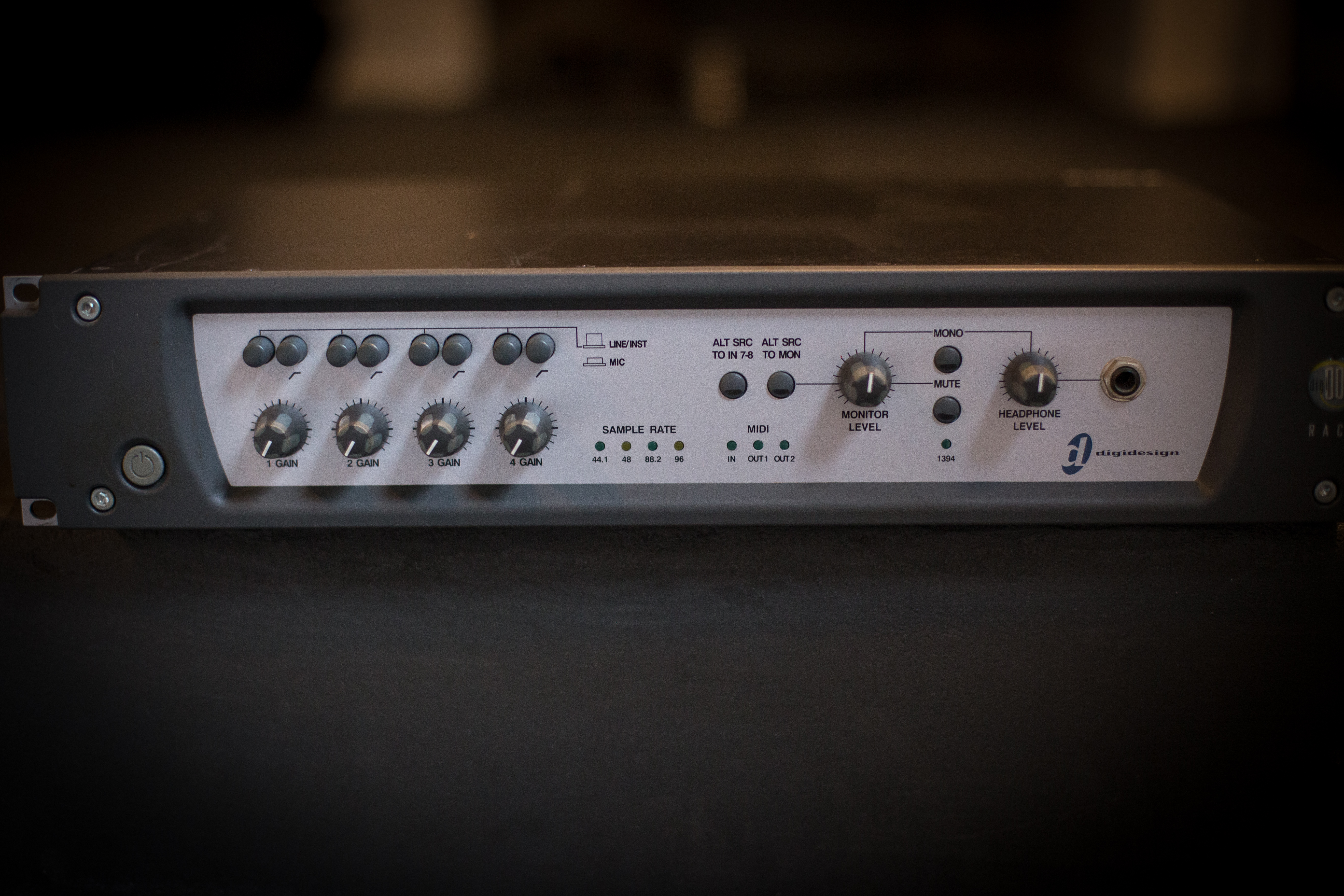
- #Digi 002 rack pro tools 12.6 install#
- #Digi 002 rack pro tools 12.6 pro#
- #Digi 002 rack pro tools 12.6 software#
- #Digi 002 rack pro tools 12.6 code#
- #Digi 002 rack pro tools 12.6 download#
MIDI information can also be manipulated. Here, audio can be edited in a non-linear, non-destructive fashion. The Edit window displays audio and Musical Instrument Digital Interface (MIDI) tracks, and provides graphical representation of the information recorded or imported.
#Digi 002 rack pro tools 12.6 pro#
Most of Pro Tools' basic functions can be controlled within Edit or Mix windows. It was at this point that the migration from more conventional analog studio technology to the Pro Tools platform took place within the industry. In 1997, Pro Tools reached 24-bit, 48 tracks.
#Digi 002 rack pro tools 12.6 software#
Although the original design remained largely the same, Digidesign continued to improve Pro Tools software and hardware, adding a visual MIDI sequencer and more tracks, with the system offering 16-bit, 44.1 kHz audio recording. The software was known circa mid-1990s as Session (for stereo-only audio cards) and Session 8 (for multi-channel audio interfaces). The OSC designers and engineers responsible for that technology, Josh Rosen, Mats Myrberg and John Dalton, split from Digidesign in 1993 in order to focus on releasing lower-cost ($399) multi-track software that would run on computers with no additional hardware. That software, manufactured by OSC but distributed by Digidesign, formed the platform upon which Pro Tools version 1 was built. The core engine technology and much of the user interface was designed by and licensed from a small San Francisco company called OSC, known at the time for creating the first software-based digital multi-track recorder, called DECK, in 1990. The first version of Pro Tools was launched in 1991, offering four tracks and selling for $6,000 USD. Although the software had the possibility to do far more, it was limited by the hard drive technology, which was used to stream audio and allow for the non-destructive editing that Sound Tools offered. At this stage Sound Tools was a simple computer-based stereo audio editor. Sound Tools debuted on Januat the NAMM Show. E-mu rejected this offer and the pair started Digidesign, with Gotcher as president and Brooks as lead engineer. In 1987, Gotcher and Brooks discussed with E-mu Systems the possibility of integrating their renamed 'Sound Tools' software into the Emulator III.
#Digi 002 rack pro tools 12.6 download#
One evening in 1986 at John Connolly's Beaverton, Oregon home, an alert was sent online from MacMusic requesting the system operator, and to Connolly's surprise it was Peter Gotcher, thanking him for providing such a revolutionary service and making Sound Designer a much more attractive program to buy, by leveraging both the universal file format and by developing the first online sample file download site in the world, many years before the World Wide Web use soared. Beaverton Digital Systems President John Connolly already had several conversations with Evan Brooks in 1985, as he was listed as a contact for technical support for the Assimilation MIDI toolkit, and the current Apple operating system in 1985 did not have native MIDI communications drivers. MacMusic allowed users worldwide to share sample libraries across different manufacturers platforms without copyright infringement.
#Digi 002 rack pro tools 12.6 install#
Macintosh Editor/librarian software development pioneers and visionaries, Beaverton Digital Systems, provided a dial-up service called MacMusic starting in 1985 which used 2400-baud modems and 100 MB of disk, and used Red Ryder Host on a 1 MB Macintosh Plus, allowing users of Sound Designer to download and install the entire Emulator II sound library to other less expensive samplers.
#Digi 002 rack pro tools 12.6 code#
This universal file specification, along with the printed source code to a 68000 assembly language interrupt driven MIDI driver, were distributed through Macintosh MIDI interface manufacturer Assimilation, which manufactured the first MIDI interface for the Mac in 1985. The Pro Tools TDM mix engine, supported until 2011, employed 24-bitfixed-point arithmetic for plug-in processing and 48-bit for mixing current HDX hardware systems, HD Native and native systems use 32-bitfloating point resolution for plug-ins and 64-bit floating point summing. It features time code, tempo maps, elastic audio, automation and surround sound abilities. It has also incorporated video editing capabilities, so users can import and manipulate high definition video file formats such as XDCAM, MJPG-A, PhotoJPG, DV25, QuickTime, and more.

Pro Tools handles WAV, AIFF, AIFC, mp3, and formerly SDII audio files. 16-bit, 24-bit, and 32-bitfloat audio bit depths at sample rates up to 192 kHz are supported.

Audio effects and virtual instruments can be added, adjusted and processed in real-time in a virtual mixer. Audio and MIDI tracks are graphically represented in a timeline here, both can be recorded, imported and edited in a non-linear, non-destructive fashion.


 0 kommentar(er)
0 kommentar(er)
